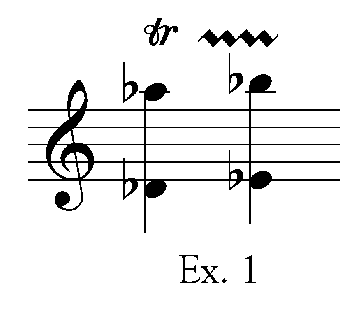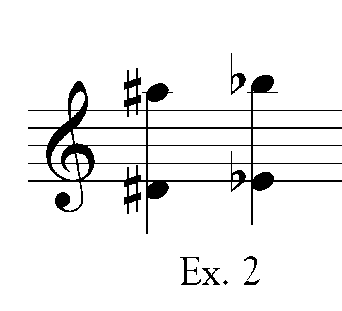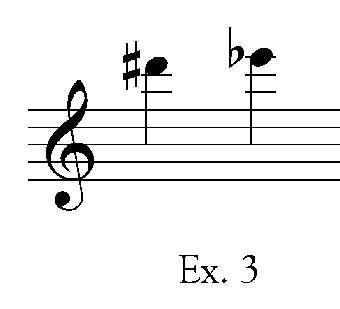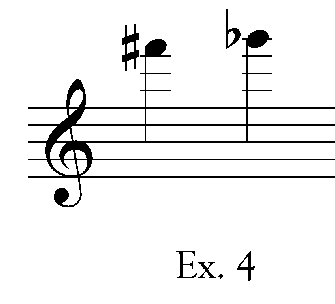|
NEWSLETTER of DAVID E. SMITH PUBLICATIONS, LLC
VOL 3, NO. 3, August, 2001
© 2001 Copyright of David E. Smith Publications
All Rights Reserved. Made in U.S.A.
Table of Contents
The Publishers' Space
Brass Space
Percussion Space
Thinking...
The String Space
Lone Arranger's Space
Meet Monty J. Budahl
Woodwind Space
A file is now available on floppy disc called "The Appendix". It is in an .rtf format and can be loaded into most any word processor.
THE PUBLISHER'S SPACE
by David E. Smith
What does it contain? Information on the complete "David E. Smith Publications, LLC" productions. Specifically, on each publication we have listed: keys, meters, durations, levels, idiom/instrument-ation, inventory numbers, musical form, themes (handy for medleys or collections), and comments as to special parts, formats or uses. Eventually Majestic Music Publications (a division of DESPUB) to the appendix.
Who will find this tool useful? Patrons of our products who need information on specific publications AND dealers who can give guidance to customers when the music is not in front of them (or maybe even if it is). It saves time trying to figure out what is involved in a composition or you can do a search for specific songs or other information that may be embedded in a medley and a single composition for that matter.
Just use the edit/find menu and put in some information to look for. With time we hope to have this tool on our website with a search feature as well.
If you wish a copy of the "APPENDIX", drop us a note, or give us a call and we'll be happy to send a copy to you. Email address and phone numbers appear on the home page.
To Table Of Contents
Multiple Tonguing
(triple and double tonguing)
THE BRASS SPACE
by Phil Norris
In developing an even-sounding multiple tongue, the single most important goal is to get the “k” to sound like the “t”
A simple Three-Stage Process works very well in accomplishing this goal.
Stage One: Singles then K's
Stage Two: Singles then Pattern (t-t-k,t-t-k OR t-k)
Stage Three: Pattern Alone (t-t-k, t-t-k OR t-k-t-k)
I recommend that the player begin with Triple Tonguing FIRST, then proceed to Double Tonguing once the triple tonguing is well along. First, triple tonguing depends less on the K than double tonguing (one-third K compared to one-half K). Second, the transition from triple to double is easier than the other way around. Players who begin with double tonguing (t-k) sometimes have the problem in triple tonguing of placing the k in the second position rather than in the third position. I also realize that flutists (and even some brass players) use a different pattern than t-t-k; the pattern t-k-t is used instead.
Regardless of which is developed first, the single tongue sound should always be the model for the sound of the k's (i.e. make the k's sound as much like the t's as possible).
In the early stages of development, spend more time on Stage One. As the skill progresses, less time will be needed on Stages One & Two. Once multiple tonguing is a reflex, only occasional work will be needed using Stage One. A helpful conditioning exercise at the advanced stage is to play material normally tongued "T" with all "K's".
Initially, play with as fluid an air flow as possible. One way to check the air flow is to blow into the hand (2-3 inches from the mouth) while shaping the mouth as if playing - similar to whistling. Blow into the hand and do the tonguing as if playing. The feel of the air should be as much like blowing a full, steady stream of air. If the tongued feel is not as full and steady as the blown air, then work to have such flow. The flow of air into the instrument should be identical to what's done into the hand.
In the first few weeks, work for endurance and consistent control, NOT SPEED. Speed will naturally follow the strengthening of the muscles involved. As the muscles strengthen and relax, speed will happen automatically. Once the process of Stage One relaxes, move on to scale passages and interval skips & arpeggios, maintaining a smooth flow to the lines and tonguing.
The first exercises should be limited to single, repeated pitches for each step indicated above (i.e. don't do patterns containing steps or skips within the pattern in the opening weeks). You can use random pitches, or use scales notes for each step, just don't change pitch within the pattern initially. After the endurance and speed and relaxation get comfortable, then proceed to steps and skips within the patterns.
As an advanced technique, the player can play complete exercises or pieces entirely with the K instead of the T.
Always keep at the forefront of awareness the flow of air through the notes as you tongue!
One closing note - this technique can be (and is) used by clarinet and saxophone players, and possibly with some success by oboe and bassoon players, though mostly it's used by single-reed players.
Recommended Materials: Arban Method for Trumpet: Triple Tonguing (pp. 155-174), Double Tonguing (pp. 175-187); Also: Arban Method for Trombone or Tuba. There is plenty of material (quantity) of all sorts (repeated pitches, scales, skips, arpeggios) in Arban that other methods lack.
Phil Norris is an Associate Professor of Music at Northwestern College, St. Paul, Minnesota, where he teaches trumpet and is an active performer.
To Table Of Contents
The Duties of a Percussion Section Leader
THE PERCUSSION SPACE
by Billy Madison
The section leader of a percussion section has many responsibilities. The director assigns some of the responsibilities while others require initiative from the section leader. An efficient leader will prevent many problems before they ever arrive. With a little planning and the knowledge of what is expected of him, the percussion section leader will improve the quality of any rehearsal or performance.
Therefore, once the position of section leader has been bestowed upon an individual he should go to the director of the ensemble and find out what is expected in terms of duties. Sometimes the director will give very specific instructions while at other times they might be a little vague. The following are ten suggested duties that are usually expected of a percussion section leader.
1. Regularly communicate with the director about what his needs are concerning the percussion section
2. Assign parts to other members of the section whenever a new composition is passed out. (Always do this in a way that allows everyone the opportunity to play different parts so that no one will be stuck doing the same thing over and over again. However, each person’s ability must be taken into account when assigning parts.)
3. Make sure the proper sticks and mallets are available for rehearsals and performances
4. Check to see that everyone in the section has their own music ready before rehearsals or performances begin
5. Before rehearsals or perfor-mances, make sure all necessary instruments are ready
6. Listen to the other members of the section to see if they can play their music well
7. Give individual help to other members of the section when they are having difficulty playing their assigned parts.
8. Call extra sectionals to work out problem areas in the music
9. After rehearsals, be sure that all equipment and music are put where they belong
10. Help maintain proper discipline within the section
Remember, it is the responsibility of the percussion section leader to see that all of these things are taken care of in an orderly and timely fashion.
However, this does not mean that the leader has to do it all alone. For one person to do all of these tasks would require a great deal of time and effort. Therefore, it is also the section leader’s responsibility to assign each member of the group specific tasks that they must do to see that all of the above duties are carried out. The section leader must work together with the members of the section in order to see that his responsibilities are met.
Billy Madison has taught instrumental music in the Arkansas Public Schools for 15 years. He studied composition with Jared Spears and Tom O’Conner. Madison has played percussion with the Northeast Arkansas Symphony since 1978.
PREACH CHRIST ALWAYS
AND AS A LAST RESORT USE WORDS.
St. Francis of Assisi
To Table Of Contents
My wife and I played recently (piano and clarinet, respectively) for our church’s PrimeTime group. The occasion was an evening dinner in the gymnasium.
THINKING...
by Harlow E. Hopkins
We played a rather flashy piece by Ernesto Cavallini and at the conclusion of the evening’s events a friend of several years came up and asked why I never play anything like that in church. I know her well enough to know that the real question was, “Why do you not play hymns and gospel songs in that style, with all the technical display?”
I answered, “Because the goal is not to entertain, not to call attention to myself, but rather to point the listener to God.” (Technique, from my point of view, calls attention to the player or singer.)
There was a moment of silence and then she responded, “Oh,” and walked away.
I was reminded of a meeting which took place several years ago when a group of eight or so people met with the pastor to discuss some suggested changes in the services. The subject of entertainment came up and a person blurted out, “If you can’t go to church to be entertained, where can you go?”
I know the “entertainment” versus “worship” debate has been going on for years, and I’m sure that it will never be fully resolved-at least not until the Lord returns. Our personal backgrounds, experiences, biases and tastes are brought to the place of worship and are operational whenever we are in the Lord’s house. It cannot be otherwise.
It grieves me when I occasionally hear of intense, heated debates, generated by my well-meaning and dedicated Christian brothers and sisters, over the “rightness or wrongness” of theirs and others’ church music philosophies. Open-minded discussion can be helpful and useful, and may ameliorate some of the intense differences existent in the church music world but it is hurtful, and to some degree, quite counterproductive to the work of the Lord for his servants to heatedly contend for one position or the other. In the end it is in everyone’s interest for each of us to earnestly seek God’s Will and to then prayerfully fulfill it.
Thinking...
To Table Of Contents
Good Buy? or Good-bye!
THE STRING SPACE
by Jay-Martin Pinner
A Layman's Guide to Purchasing a Violin, Viola, Cello or Double Bass - Part 1
Purchasing stringed instruments for students or an orchestra program may be comparable to walking through a mine field without a map. Selecting an instrument outfit can reward us with an instrument that is genuinely a good buy, or punish us with an instrument we wish we had never bought. Hopefully, these next several columns can serve as a map that will help teachers and students make informed string instrument purchases.
Stringed instruments are sold at three price levels. An entry level instrument is called a student instrument, with a price ranging from several hundred dollars to approximately $1,200. A mid-level instrument is considered a step-up instrument, ranging in price from $1,200 to $4,000. A top-level instrument is referred to as a professional instrument, costing $4,000 or more, up to several millions of dollars. Putting this in perspective, many music majors at colleges and conservatories play an instrument with an appraised value of $10,000 to $20,000. A major recording artist may play an instrument appraised at several million dollars.
What makes one instrument worth more than another? There are two general reasons. The first is sound. The second is provenance or, more simply, the maker and country of origin. There are a few Stradivarius instruments that are in poor repair and do not sound good. Because they are known to be made by Stradivarius in Cremona, Italy, during the golden age of violin making, those instruments still fetch a high price at auction when sold to collectors. While the instruments may not be in perfect condition, the name "Stradivarius," and the fact that they were made in Italy, keeps their value high. In contrast, an unknown contemporary maker may produce instruments with extraordinary tone and fine craftsmanship. Since the maker is not known he or she cannot charge as much for the instrument. Such undervalued instruments are often good buys, especially in the step-up and professional price ranges.
When purchasing a student level instrument with limited funds the buyer should budget as much money as possible for the instrument. Within the overall budget the next most important item is a good case to protect the instrument. To save money initially the buyer may purchase a fiberglass bow with horse-hair as a temporary bow. A good, pernambuco wood bow should then be purchased as soon as it is financially possible. The fiberglass bow may be kept for use as a spare bow. Fractional sized instruments may be purchased for a school or church program, or for a family with younger siblings who may study strings. For most families however, it is more economical to rent smaller instruments until a child is ready to purchase a full-sized one.
The first step in purchasing a string instrument is deciding on the budget. The budget should take into consideration the student's needs. Is the student a beginner or moving on to a step-up instrument? Does the student want the instrument to last through middle school and perhaps the first year of high school? Is the student needing a step-up instrument for high school or for use as a music minor in college, or is the student in need of an instrument suitable for use as a music major in college? Once the budget is set, the student may begin trying out instruments in the appropriate price range to find one that matches his needs and "feels good in the hands."
All stringed instruments should meet or exceed the guidelines set forth by the Music Educators National Conference. Instruments usually state this on the product tag. These guidelines, available from MENC in Reston, VA, include basic indications of quality workmanship such as an ebony fingerboard, ebony pegs, a good quality maple bridge, inlaid purfling, varnish and specifications for carved or laminated construction (cellos and basses).
Inexpensive, imported instruments often do not meet these guidelines. These instruments spend more time being repaired than being played. Such instruments often try to duplicate the look of ebony pegs and fingerboards by coloring cheaper, softer woods with black dyes or stains. Real ebony is black throughout the wood. Dyed wood reveals light colored wood beneath the top layer of faked color. Ebony withstands wear extremely well. Soft wood pegs and fingerboards wear away quickly making an instrument difficult to tune and impossible to play on in tune. For these reasons orchestra programs strongly discourage using instruments that do not meet these minimum standards.
Jay-Martin Pinner is Head of the String Department at Bob Jones University in Greenville, South Carolina. He supervises the University's String Instrument Repair Shop, and is responsible for the procurement and maintenance of pre-college and University-owned instruments.
To Table Of Contents
IN THE BEGINNING Suggestions for the First-Time Writer
LONE ARRANGERS SPACE
by Dana F. Everson
So you want to be an arranger? Here are a few words of advice as you approach the threshhold and peer into the exciting world of writing music...
1.Study-Learn all you can about the characteristics of the instruments for which you intend to write. See the earlier article about some book recommendations. (Lines & Spaces, vol. 2, no. 4, November, 2000)
2.Observe-Listen to every musical piece analytically; think Melody, Harmony, Form, Color and Rhythm. As yourself “what makes this selection unique?”
3.Imitate-Bach, for example, copied hundreds (or more likely, thousands) of pages of music, all the while observing and later imitating various composing styles. Learn from the greatest composers.
4.Focus on Melodic Writing-Listen to and examine the greatest melodies from folk music, classical music, and hymns.
5.Experiment-Write for what is available (present instrumentation) until you can write for what you want. (“perfect instrumentation”) Don’t be afraid to try new ideas, but always know WHY you are trying it-what effect are you seeking-how might it enhance the words? 6. Finish-Once you have completed a sketch, FINISH THE ARRANGEMENT. Even if you change your mind about some aspects of it, you will learn far more if you bring the piece to a point of finality and get it read or recorded for further study. Listen to your critics and resolve to improve any blind spots in the future.
7. Repeat-Write, write and write again.
8. Call home once a week.
POSSIBLE INSTRUMENT SUBSTITUTIONS by Dana Everson
| Needed Instrument |
Possible Substitutions |
Adjustments Required |
| FLUTE |
OBOE
CLARINET
VIOLIN
|
Upper range may go too high
Transpose up M 2
None |
| OBOE |
FLUTE
CLARINET
MUTED TRUMPET
VIOLIN |
Lower range weak in flute
Transpose up M 2
Transpose mu M 2
None
|
| BASSOON |
BASS CLARINET
TROMBONE
TENOR SAXOPHONE
BARITONE SAXOPHONE
CELLO |
Transpose up a M 9 (clef) range
Transpose up a M 9 (clef)
Transpose up an 8th + M 6 (clef)
None
None |
| CLARINET |
OBOE
ALTO SAXOPHONE |
Transpose down M2
Transpose up a P 5;
upper range may go too high |
| BASS CLARINET |
BASSOON
TENOR SAXOPHONE
BARITONE SAXOPHONE
CELLO |
Transpose down M 9, range
Transpose up P 5
Transpose down M 2 (clef)
Transpose M 9 (clef) |
| ALTO SAXOPHONE |
CLARINET
VIOLA |
Transpose DOWN A p 5
TransposeDOWN m 6 (clef) |
| TENOR SAXOPHONE |
BASSOON
BASS CLARINET
BARITONE SAXOPHONE
CELLO |
Transpose down M 2 (clef)
None
Transpose up P 5; range
Transpose down M 2 (clef) |
| BARITONE SAXOPHONE |
BASSOON
BASS CLARINET
CELLO |
Transpose down 8th+M 6; (clef) range
Transpose down P5
Transpose down 8th + M 6 (clef) |
Needed Instrument |
Possible Substitutions |
Adjustments Required |
| HORN |
CLARINET
ALTO SAXOPHONE
TENOR SAXOPHONE
TROMBONE
CELLO |
Transpose dwon P 4
Transpose up M 2
Transpose up P 5
Transpose dwon P 5 (clef) range
Transpose dwon P 5 (clef) |
| TRUMPET |
CLARINET
SUB
ALTO SAXOPHONE |
None
Transpose up P 5 |
| TROMBONE |
BASSOON
TENOR SAXOPHONE
BARITONE SAXOPHONE
HORN
BARITONE
CELLO |
Transpose None
Transpose up M 9th (clef)
Transpose 8th + M 6 (clef)
Transpose P 5th (clef)
None
None |
| TUBA |
BASSOON
BASS CLARINET
BARITONE SAXOPHONE
CELLO
STRING BASS |
None
Transpose up 9th (clef)
Transpose up 8th + M 6 (clef) range
Sounds 8th higher than written
8th lower than written |
| VIOLIN |
FLUTE
CLARINET |
Range
Transpose up M 2; range
Transpose
Transpose |
| VIOLA |
CLARINET
ALTO SAXOPHONE
TENOR SAXOPHONE
VIOLIN |
Transpose up M 2; (clef) range
Transpose up M 6,(clef)
Transpose up M 9, (clef)
Transpose |
| CELLO |
BASSOON
BARITONE SAXOPHONE |
Range
Transpose up 8th + M 6; (clef); range |
Conncerning the Substitution Chart on page six: Mr. Everson states, “The chart lists only some of the possibilities. Please consult the standard orchestration texts for others. The best alternatives may not be available, especially in a small church or school setting. So, planning ahead with music purchases or with writing out transposed parts is important to the success of a rehearsal. In general, it is best to replace a woodwind with another woodwind, brass with brass, etc. In some cases the piano may serve as a substitute depending on the style.”
Dana Everson is on the faculty of Northland Bible College in Wisconsin. Prior to that he was an Asst Prof of Music at Delta College in Michigan. He has over 125 published works.
To Table Of Contents

MEET DR. MONTY BUDAHL
I grew up in northern Minnesota near the small, rural community of Erskine. My parents weren’t especially musical, though my father’s sisters both played piano.
When I was in fourth grade, one of my aunts allowed us to store her upright piano at our house, enabling me to begin piano lessons. The next year, my parents purchased a used, tarnished, metal clarinet. Because the clarinet was made of rather soft material, I frequently had to bend the levers and keys back into adjustment during frustrating practices, . . . ,beside a smoky, kerosene lamp (honest!).
Since all my buddies played brass instruments, I didn’t like the clarinet. I began to practice seriously in eleventh grade participating in solo/ensemble competitions. My first contest judge eventually became my first clarinet teacher.
I entered the University of North Dakota in a mathematics program but switched to music education in my sophomore year. I was involved in band, choir, and orchestra.
After graduation, I taught two years in a small public school in Minnesota during which time I accepted Christ as Savior. I enrolled at the University of Minnesota for my master’s degree and accepted a junior high teaching position in St. Paul Park. In time, the church to which I belonged hosted a choir from Maranatha Baptist Bible College, newly founded by Dr. and Mrs. B. Myron Cedarholm.
The Lord was working in my life and moved me to resign my position without any secure plans. As doors of opportunity closed, only Maranatha remained open. After I met with Dr. Cedarholm, he sealed our agreement with a handshake and a promise for me to be paid “as the Lord provided”.
In God’s providence, Dr. Cedar- holm’s secretary became my wife. We now have a grown son and daughter, and have served together for over 30 years. In 1979, I was honored by Bob Jones University with a Doctor of Music degree.
The Lord has permitted me to have over 30 arrangements published, including sacred instrumental solos/ensembles, classical solos, and choir works. I am forever thankful for God’s directing, enabling, and blessing.
To Table Of Contents
Clarinet Fingerings, Part 2
THE WOODWIND SPACE
by Harlow E. Hopkins

For those infrequent times when one must trill from Db to Eb, or Ab to Bb (see Ex. 1) finger the Db or Ab and simply raise and lower “1” (the left forefinger.)

In arpeggios involving the notes in Ex. 2, the “1/4” fingering is a very useful fingering. There are times too, when one may use “1/5” or even “1/6”.


The most fre- quently-used alternate fingering for the notes shown in Ex. 3 is Thumb & Register Key, 23/5/Y. However, Thumb & Register Key, 23/6/Y will work well in certain cases. The pitch is slightly different with each fingering and that may assist in the choice of which one to use. Most of the time, however, the note context will provide a stronger reason.

The regular fingering for the notes shown in Ex. 4, (Thumb & Register Key, 2/Y) is usually flat. However, if one will simply use Thumb & Register Key, 12/TR4 the pitch is slightly higher and usually very acceptable. Key Y may be added to raise the pitch still higher if desired.
Harlow Hopkins is Professor Emeritus at Olivet Nazarene University, Bourbonnais, Illinois and continues there as an Adjunct Professor of Clarinet. Hopkins is a co-conductor of the Kankakee Valley NEW HORIZONS BAND.
To Table Of Contents
Order Newsletter
To Table Of Contents
Preach Christ Always
And As A Last Resort
Use Words.
St. Francis of Assisi
MEET DR. MONTY J. BUDAHL
by Harlow E. Hopkins[top]
|




